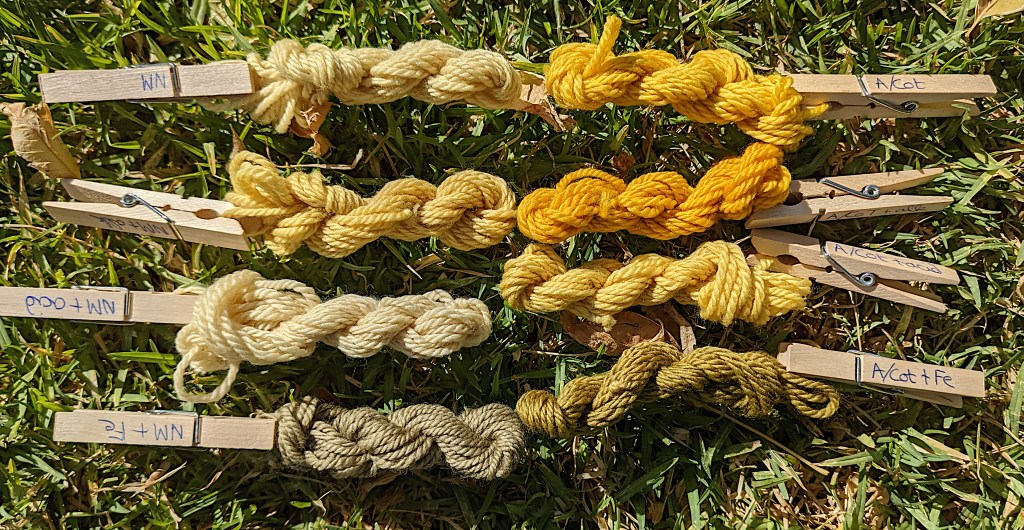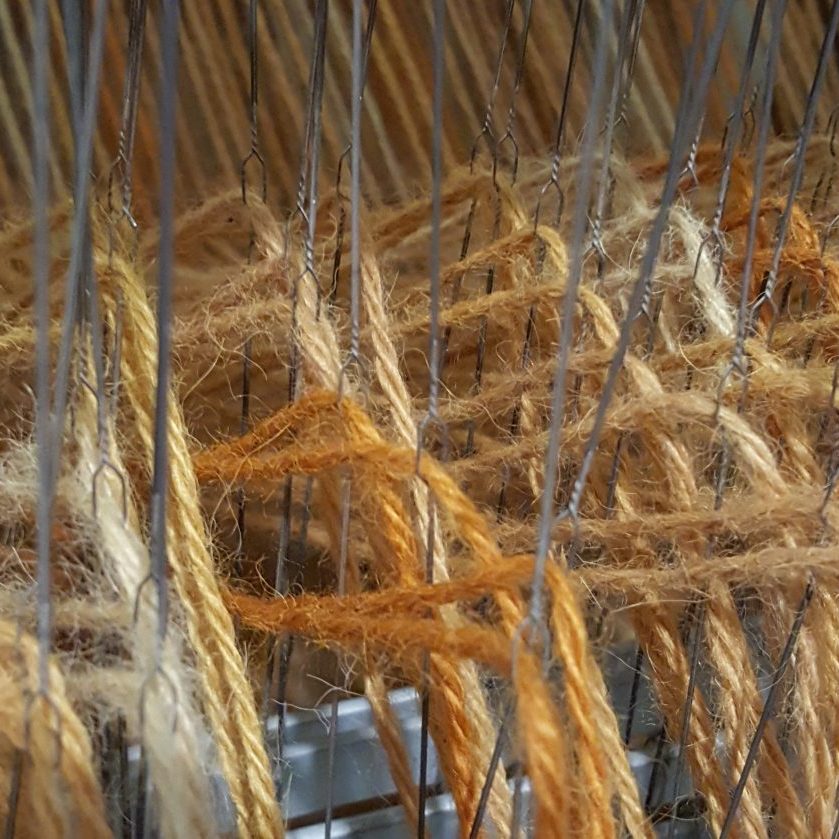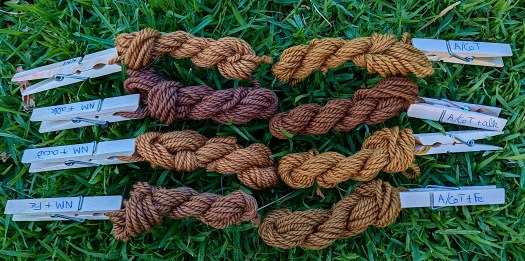Olea europaea et carrye illinoiensis, feuilles d’olivier et de pacanier, Oliven- und Pekannuss-blätter, hojas de olivo y nuez, duilleoga olóige is pecan
When I see an abundance of flora yet not much evidence of its use as a dye plant, I wonder if it’s because people have tried in the past and found it fruitless. Alexanders, Smyrnium olusatum, is something that pops up in great numbers at this time of year, and after weighing up the urge to try it against the logic that if the ancient Greek sand Romans didn’t use it for colour, they’d probably tried it and rubbed it off the tablet, the urge was still there.
I got the palest yellow.
Then there is Yggdrasil, my pet name for the huge, spreading pecan tree nearby. Walnut leaves produce such a wealthy colour, so surely their cousin must. I was also hoping to find some nuts, but the local wildlife had already feasted, leaving just a few scalpings of fruit here and there. Fair enough. I took some leaves, which were moderate in size, then some from a sapling growing beside its parent in a drainage ditch. The leaves were much larger even though the ditch was dry. Perhaps because it had less chance of photosynthesizing? Anyway, there were enough that I could take some without doing damage to the sapling’s future.
The result was a range of strong browns and yellows that reminded me of a 1970’s dyebook. Any different to other yellows and browns? Different enough to record this as a local dye source.
Next came the olives. Apart from being an important crop here as in other parts of the world, they’re also a very common weed. Taking a few small branches home from the local national park was therefore a service. Again, not a lot of evidence that they’ve been used as a dye. Perhaps because they were too important for oil and fruit production while weld wasn’t?

The results were however amazing: Easter yellows to a bronzy-green! The latter I would usually describe as “olive”, but in the circumstances… I decided to repeat the experiment to see if the green was easily achievable and not just a fluke, and also to try out the copper modifier. Unfortunately, neither turned out anything to shout about… maybe not enough plant material? I’ll try again…


That’s so interesting. I’ve noticed that some people who run to contact prints love pecan leaves, and others love walnut leaves. I have tried both with varied success, and perhaps this is because this is a case for iron mordanting on cloth, or perhaps it is more a case of my routine fibre choices. I’ll get onto investigating that further at some stage! I had not been looking at olive leaves, but now I certainly will. FYI I have checked Ida Grae, the dyer whose book covers more species and demonstrates more curiosity than any other I know–and she reports bright yellow and olive green as her findings from olive leaves; with results also given for olives raw whole, and olive skins with various adjuncts. I’ve just returned from harvesting olives in a conservation park–and can only second your view that using pest species for dye is a good idea. Love those browns!
LikeLiked by 1 person
I’m have to get a copy of that book.
LikeLike
You’re welcome to borrow it. She is a delightfully eccentric writer!
LikeLike
Would love to, thanks. Will give me some time to find a decent copy. Eccentric and adventurous? Music to my ears!
LikeLike
Hi! Beautiful results! What does the CoT stand for on your labels?
LikeLike
Thank you! Cream of tartar. The supermarket stuff works fine for me.
LikeLike